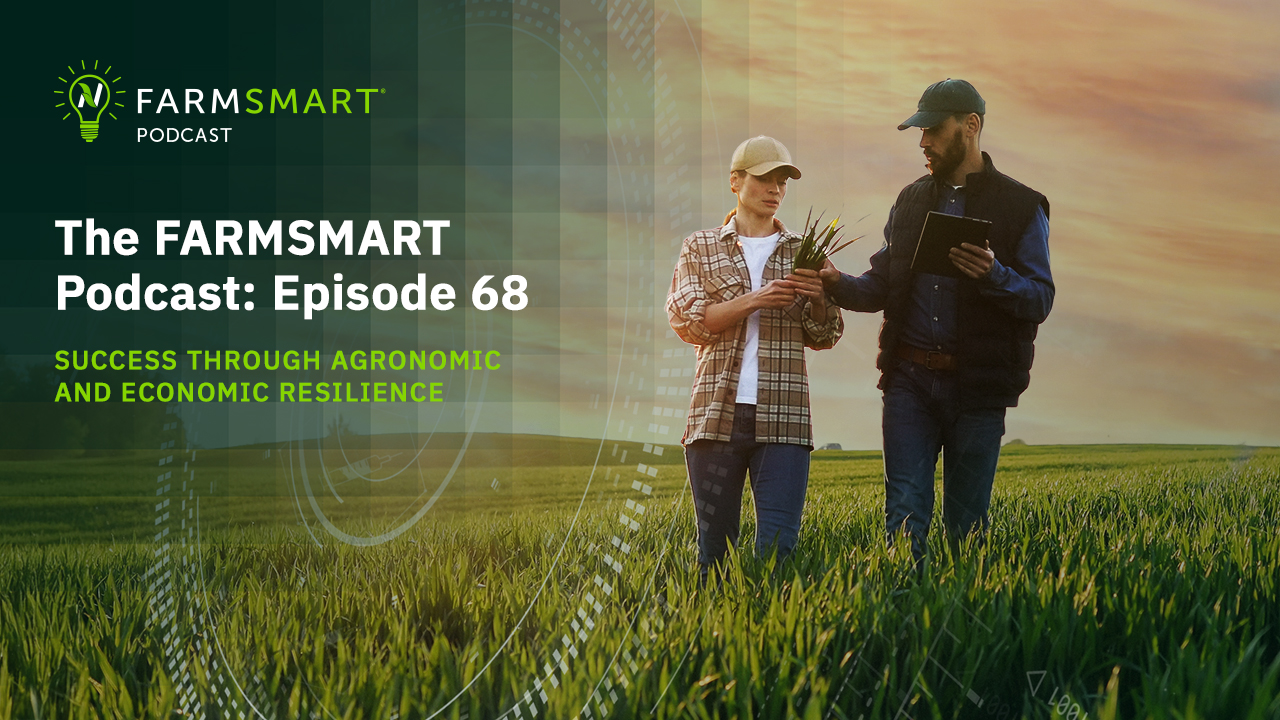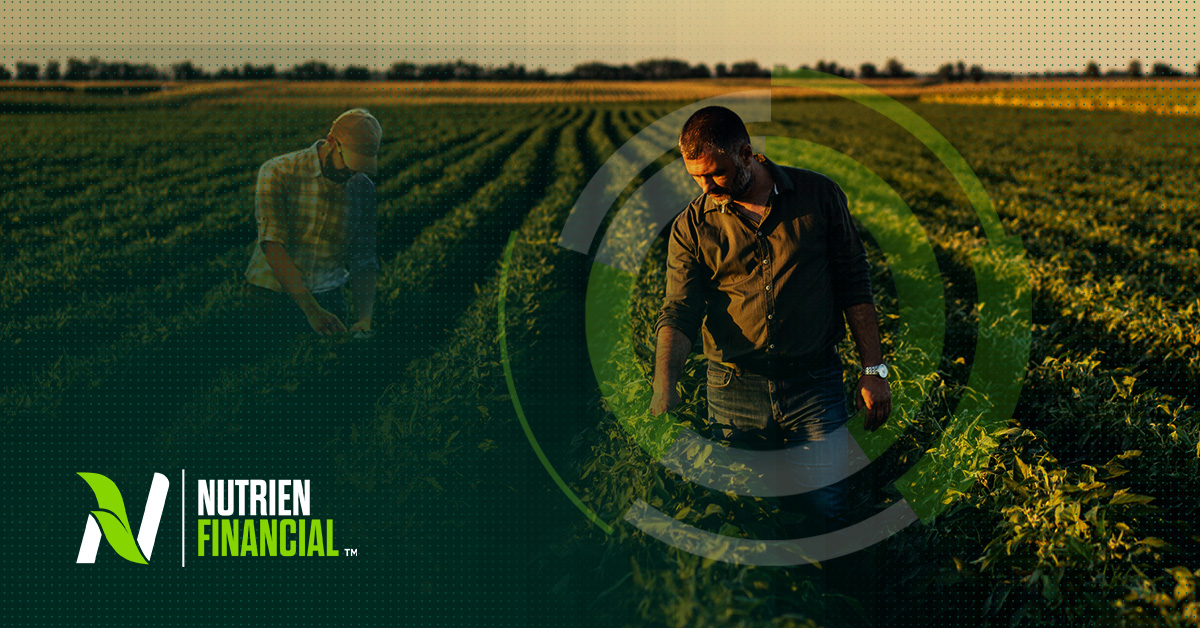Posted August 25, 2025 | By: Nutrien Ag Solutions
Prepping for Harvest Across the Regions
Crop Consultants Share Expertise to Prepare for the Upcoming Harvest
Back in March, we asked local experts to share how they prepare for the growing season. As our Nutrien Ag Solutions growers head into fall and the busy harvest season, we asked those same experts what they’re focusing on now. Across the country, each region is focused on bringing in a great harvest for their growers, who they have been working so closely with throughout the year.
Here’s more about what they had to say.
Corn Belt Region — Kelly Marshall, Crop Consultant
In the Corn Belt region, teams are monitoring for fungal infections that could impact harvest timing and reviewing weed control and fertilizer programs.
“In soybeans, we’ve finished fungicide applications and are watching closely for late-season pod worms and stink bugs,” said Kelly. “We’re also walking test plots to note plant characteristics that will guide hybrid selection for next year.”
Excessive summer rain left several acres fallow and couldn’t be planted, which shifted focus to more wheat and cover crop acres that will be seeded during harvest.
“Unfortunately, due to heavy populations of army worms in our area all these newly seeded acres, hay and pasture acres are needing to be checked daily and treated quickly if army worms are found. Our normal quiet time to finish out one crop season before starting another is a bit chaotic.”
The toughest part? “It’s challenging trying to finish one season strong while starting the next. Right now, we’re ordering seed for 2026 and setting programs and pricing while still focused on closing out last year’s work.”
Even so, there’s optimism. “Most of the corn and soybean acres that were planted look to have strong yield potential, and growers that utilize a high yield management strategy with us are going to reap the benefits of their investment,” says Kelly.
South Region — Eric Lee, Division Seed Manager
In the South Region, corn harvest typically takes place in the first couple of weeks in August, so teams have made the last few notes on new varieties in the on-farm variety trials and are already into harvest.
“Weather always plays a big role in the Southeast as we think about harvest,” says Eric. “We deal with a lot of afternoon pop up thunderstorms, so being on time with fungicide applications in peanuts and pix applications in cotton is important this time of year.”
This is also the time to stay connected to suppliers. “Getting to see supplier variety trials and looking forward to new seed releases, as well as new Dyna-Gro releases is always exciting,” says Eric. “We want to make sure supplier relationships are still solid after a busy seed season and continue strengthening them in the coming months.”
East Region — Jeff Harris, Branch Manager
This year in the Centreville, Maryland area in the East Region, the teams are looking at a ‘home run’ on all three crops.
“We had a great yield on wheat and several growers said the best ever,” said Jeff. “In 2022 and 2023 we had record yields in our area and 2025 has the potential to beat that. Growers have applied fungicide and Loveland nutritional’s to their corn crop and they’re starting to do that on soybeans, which has not been done in several years. We should have a good fall with fertilizer and seed sales with Dyna-Gro wheat.”
As the location closest to the Chesapeake Bay watershed, before they apply fall fertilizer on a wheat crop, the teams there must pull soil samples and get nitrate tests to see where levels are.
Other challenges during this time of year include trying to balance everyone’s time off, while still attending to inventory, upcoming budgets for fall and the next year, and getting ready for the fall season.
“Trying to plan for the next season is always hard,” says Jeff. “Growers have a plan in early fall for the next season, but there are always changes. We make our plans for the next season from their plans, and when they change their plans, our location has to change, too – so staying prepared but flexible is key.”
While there are challenges to this part of the year, there are a lot of successes, too.
“My favorite part of this time of year is seeing the hard work of my workers and myself turn into, what we hope, is a great crop for our growers,” said Jeff. “We want our growers to grow the best crop possible. I feel that my grower’s crops are my crops! When our growers are successful, we are successful. It’s always a pleasure to ride combines with growers when they are harvesting a great crop.”
Jeff and his team are always working with growers to get through the season and do the absolute best they can for our growers.
West Region — Henry Hinkle, Crop Consultant
In the West Region, the teams are just starting almond harvest, with pistachio harvest on the horizon. They are also monitoring Navel Orangeworm (NOW) pressure using traps, field scouting and degree days to time the sprays.
“NOW is the most important pest this time of year in those crops so proper spray timing aligned with pest and crop phenology is critical to keep damage to a minimum,” said Henry. “At the same time, we are reviewing our latest tissue samples to begin planning for post-harvest fertilizer applications and consider any soil amendments that we want to apply this fall.”
Almonds are harvested by first shaking them off the trees and then left on the ground for several days to dry before being swept into windrows and picked up. At this time, Irrigation water is reduced and the shaking, sweeping and harvesting activities both stress the trees and stir up dust, creating favorable conditions for spider mites.
“These activities also create challenges to apply any chemical controls as the crop drying on the ground prevents ground rigs from entering the field, and we must be mindful of re-entry and pre-harvest intervals of any materials we apply,” said Henry. “We have worked all season to bring the crop to harvest and must now work around these challenges to make sure the crop remains clean. This creates logistical challenges require planning and close coordination between all parties involved.”
Henry and his team are also working with growers and reminding them how critical the last few sprays are to deliver a clean harvest.
“We have been spending time, money, and other resources all season without knowing what kind of return we’ll see, and this is our last chance to maximize our output.” Henry added.
As fall approaches, Henry is most excited to see the crops he has worked on all season brought to harvest.
“There is so much work by everyone involved to make it this far and seeing the literal fruits of your labor is very satisfying,” Henry said. “I am also excited by the fact that once this year’s harvest is complete, we move right into planning for next year and working on everything we need to get done between now and bloom time next year.”
“I am so grateful to work in an industry, with growers and for a company that literally feeds the world,” Henry continued. “I am excited every day to come to work knowing that Nutrien Ag Solutions is the leader in every aspect of crop inputs allowing me to serve my customers in the best way possible.”
FEATURED LINKS
NEWSLETTER
Want to stay caught up in all things agriculture? Sign up for the newsletter and get all the latest news straight to your inbox.





